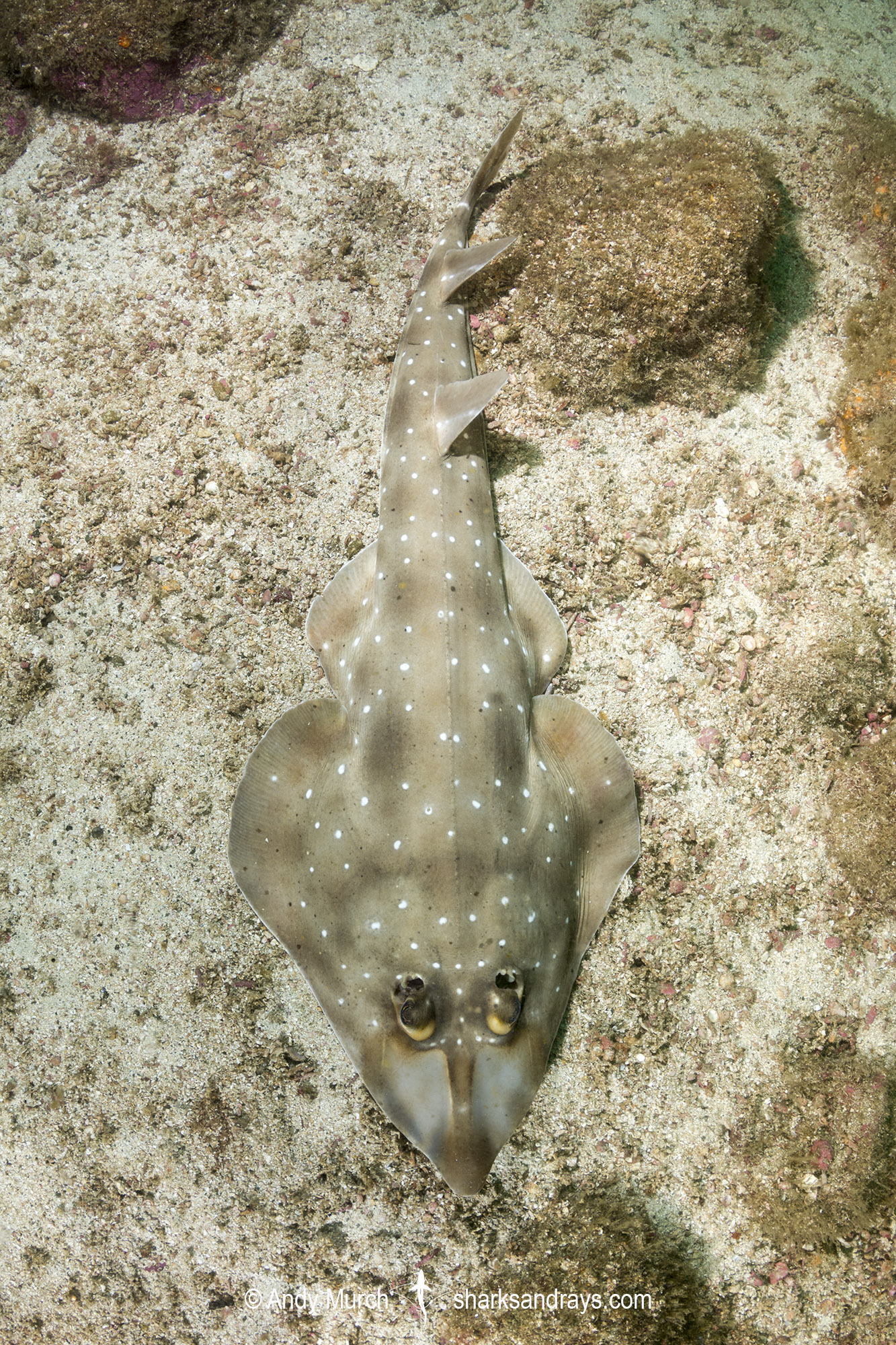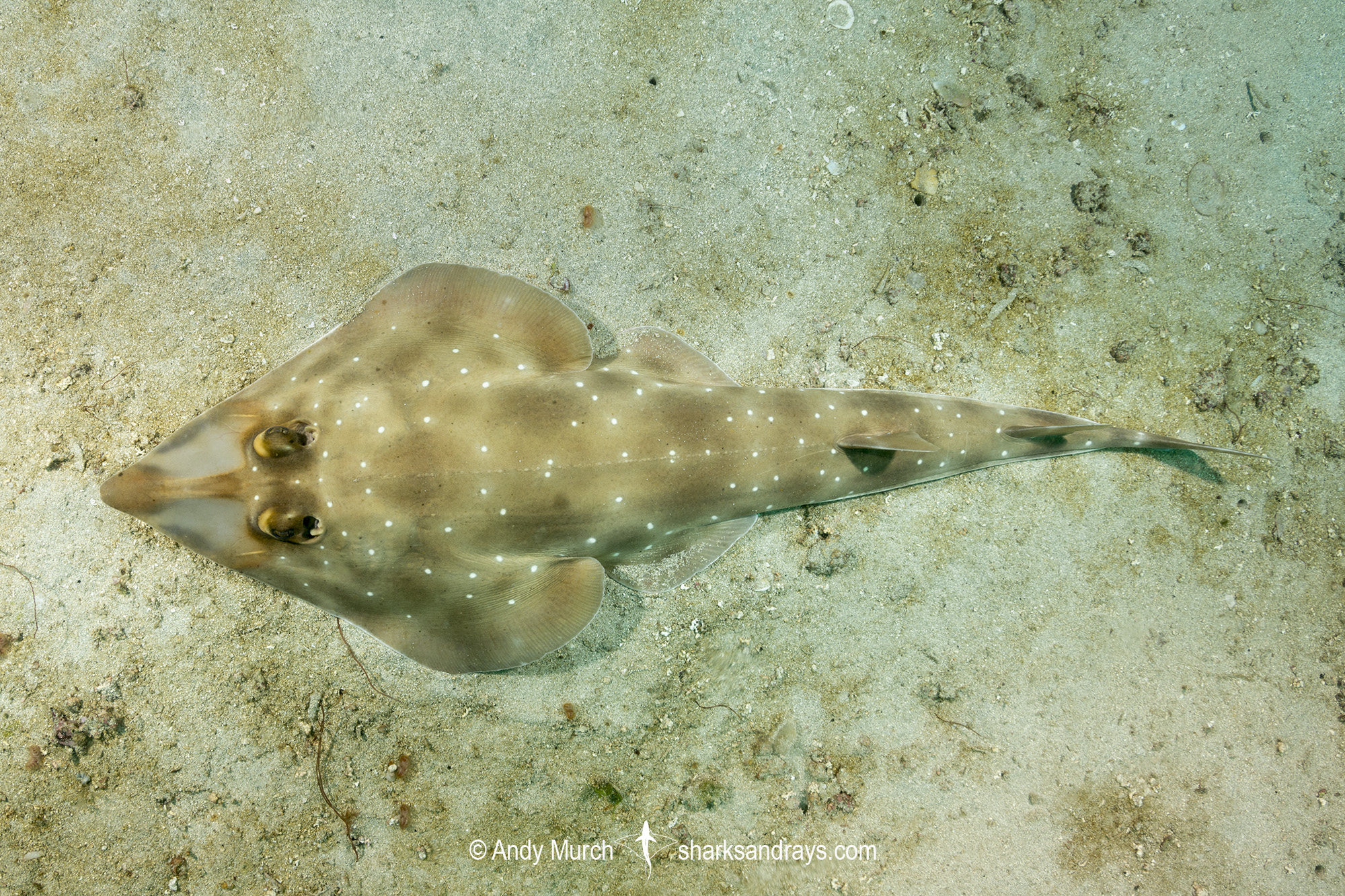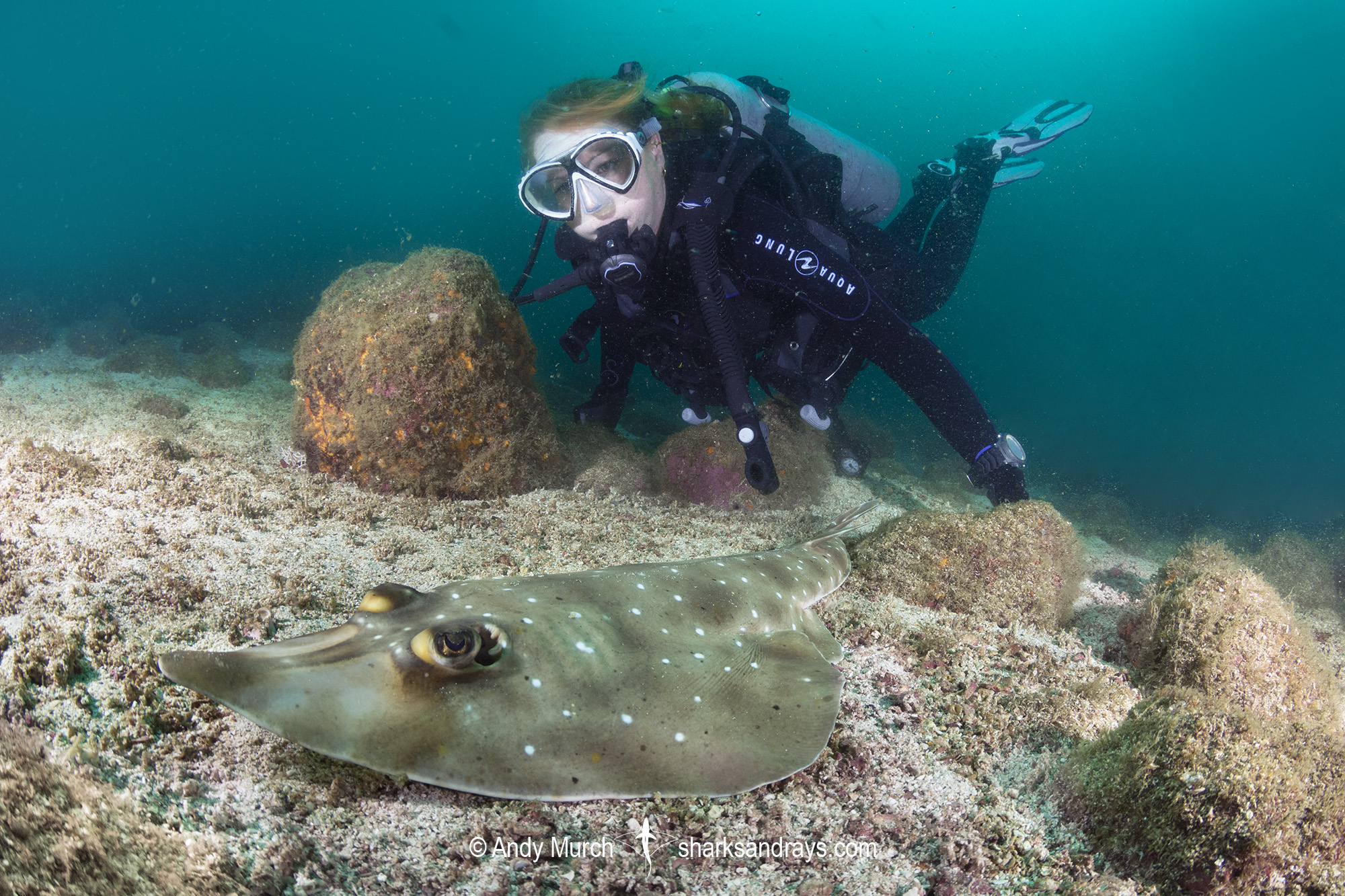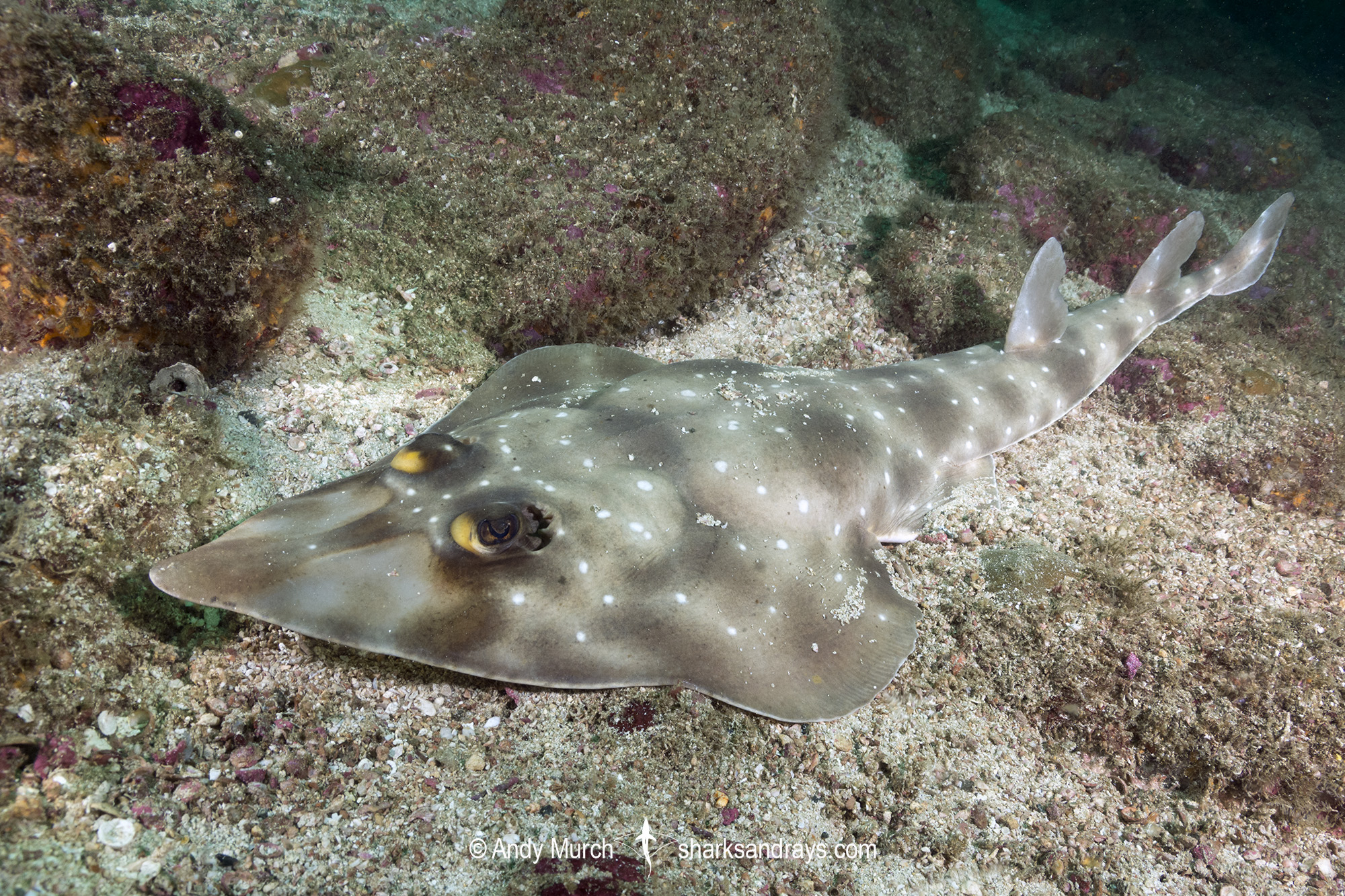Common names
Gorgona Guitarfish.
Binomial
Pseudobatos prahli.
Synonyms
Rhinobatos prahli, Rhinobatus prahli.
Identification
A medium-sized guitarfish with a wedge-shaped snout with a narrowly rounded tip. Rostral ridges relatively broad, adjoined anteriorly then narrowly separated throughout their length. Eyes very large. Snout length ~3 x orbit length. Spiracles have 2 skin folds on posterior margin; outer fold larger than inner. Nostrils large, positioned obliquely. Nasal curtain absent. Large anterior nasal flaps extend well into nostril opening.
Anterior margins of disc weakly undulate. Pectoral apices broadly rounded. Skin completely covered in small denticles. Small thorns around orbits and above spiracles, on shoulders, and along midline and tail.
Tail robust and long; 1.6 x disc length. Dorsal fins tall and well separated, with narrowly rounded or angular apices. Caudal fin triangular, without a defined lower caudal lobe. Caudal fin upper tip acutely tapered.
Colour
Dorsum greyish-brown with diffuse dusky blotches and sparsely scattered, small white spots. Blotches on snout tip and in front of eyes blackish. Anterior region of orbits bright yellow/orange. Rostral cartilage pale. Ventrum pale.
Size
Maximum length 90cm. Size at birth 20-22.5cm.

Conservation Status
VULNERABLE
The Gorgona Guitarfish (Pseudobatos prahli) is a bycatch component of shrimp trawl, gillnet, and longline fisheries. It has become rare in Mexico and is not common in fisheries in Central America, but it is still abundant in Ecuador even though it is targeted there. Throughout most of its range fisheries are poorly managed, but its preference for rocky terrain where trawling is not possible, affords it some protection.
Overall, it is estimated that the gorgona guitarfish population has been depleted by 30–49% over the last 15 years.
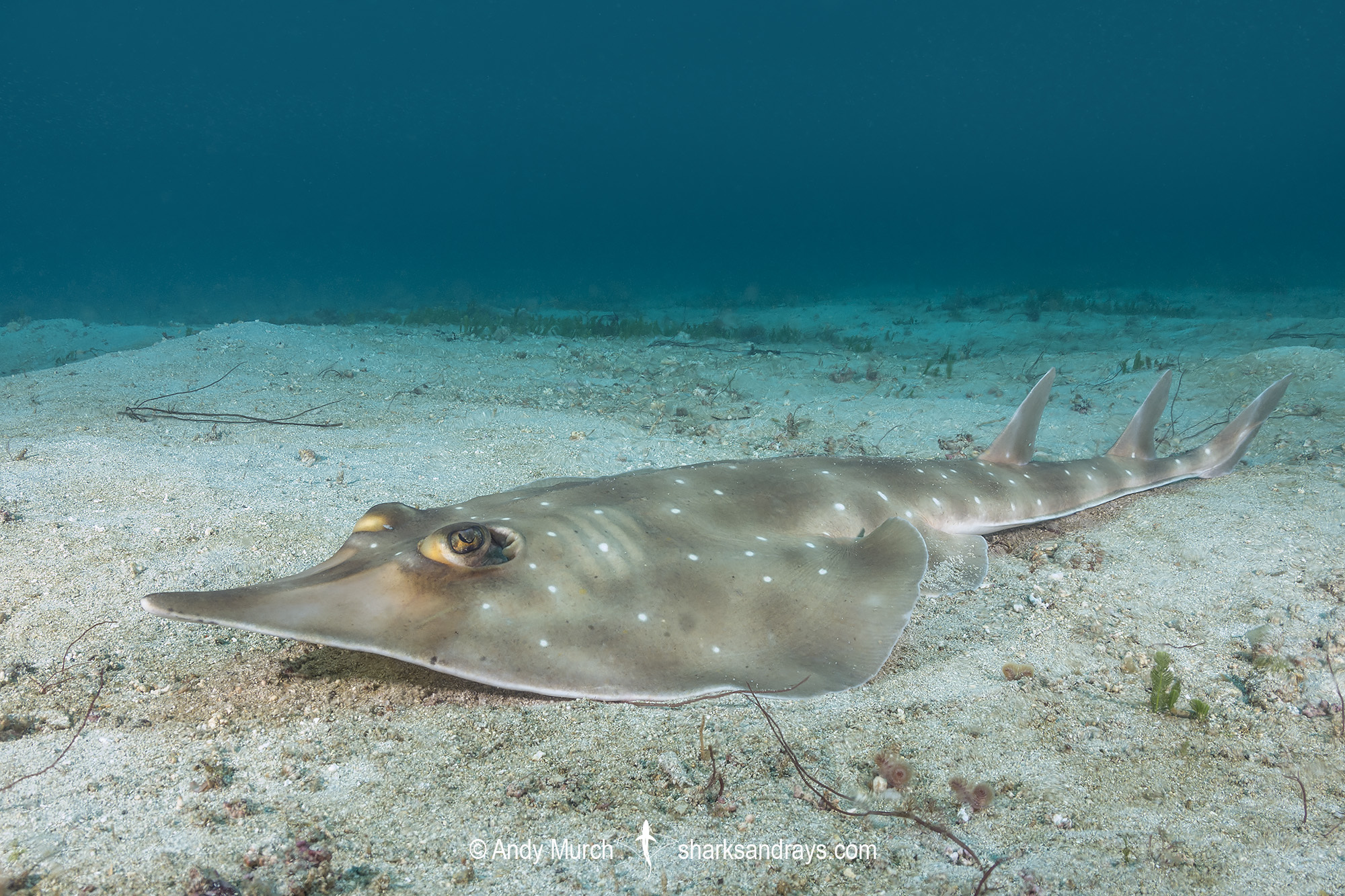
Habitat
Tropical/sub-tropical seas. Benthic on sand, sometimes adjacent to rocky reefs. From close inshore to 70m.
Distribution
Eastern Pacific. The gorgona guitarfish occurs from southern Mexico to northern Peru.
Reproduction
Aplacental viviparous. Litter size 1-6.
Diet
Diet unknown.
Behavior
In Panama, the gorgona guitarfish rests by day in shallow water around offshore islands.
Reaction to divers
Fairly easy to approach. Generally tolerant of divers unless approached too aggressively.
Diving logistics
One of the easiest places to find gorgona guitarfish is around Coiba Island in Panama. A number of dive shops run single or multi day trips to the island from the village of Santa Catalina. The island itself is a protected park with no hotels or restaurants but it is possible to stay in a basic dormitory at the ranger station.
The best time of year to find this and other species of guitarfish at Coiba is during February and March when deepwater upwellings flush the island with very cold water. During other times, lucky divers may still be able to see the occasional guitarfish at deeper dive sites (30m+) below the thermocline.
The gorgona guitarfish is also quite common at dive sites along the Pacific coast of Costa Rica.
What’s new
View our full list of updates
Similar species
No other guitarfishes in the Eastern Pacific have a pattern of bold white spots.

